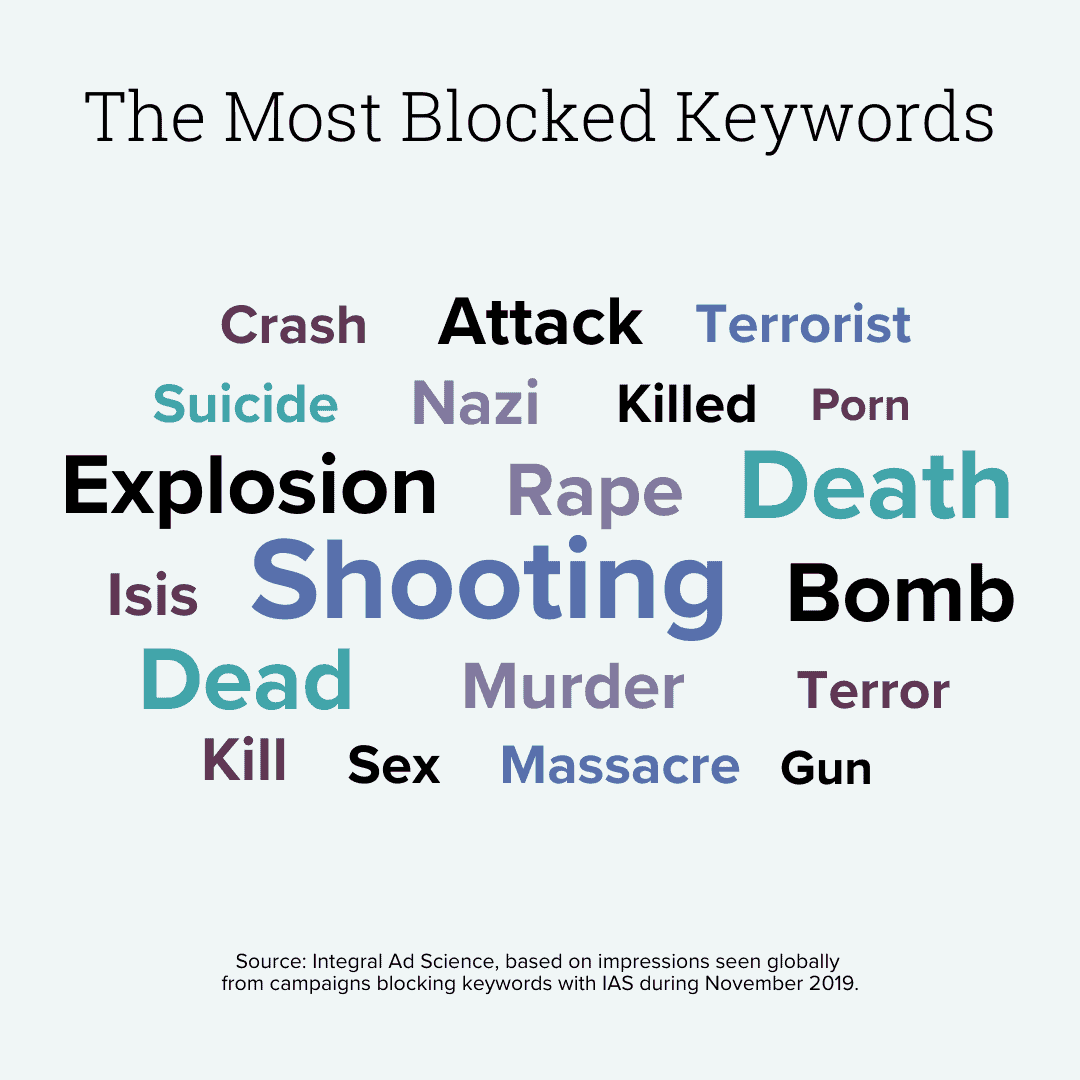Keyword Anti-Targeting: What to Know, What to Avoid, and Why You Shouldn’t Worry


If you’re familiar with the Mediavine requirements for joining our publisher community, you’re probably aware of brand safety and for good reason.
The term brand safety is somewhat self-explanatory, as are the tools advertisers implement to maintain it — namely keyword blocking and block lists.
The content published by websites that brands pay to be on is of the utmost importance to advertisers wary of who and what they are associated with.
Ads placed next to content related to violence, extremism, topics targeted toward minors or other high-profile examples are anathema to brands.
In recent years, many family-friendly advertisers have requested that their ads no longer run next to this type of content or anywhere close to it.
The content an ad runs alongside is known in the industry as brand adjacency. (Yes, brand safety has now spawned an “adjacent” ad tech term.)
Brand adjacency may sound like a term I made up, but its importance can’t be overstated as brands seek more control over where their ads appear.
The below graphic of most-blocked keywords tells the story. Some are obvious and usually avoidable, but it’s a broader set of terms than you might think.

From violent terms like “killer” to general ones like “sex” and the now-ubiquitous “COVID” and “pandemic,” many common words are being blocked.
As we say on our list of Covid-19 related words to avoid, these seemingly arbitrary blockages can impact ad revenue in certain circumstances.
Keyword block lists and anti-targeting methods are designed with good intentions, of course, but don’t always work out as planned.
From celebrity gossip articles on the Duchess of Sussex Meghan Markle (note the word “sex” in her royal title) to your food blog’s “killer” brownie recipe, websites are potentially running afoul of keyword block lists and anti-targeting methods without realizing it.
Beyond those weird and slightly humorous examples, news sites in particular are hamstrung by this on a daily basis. Reporting on violent crimes or the global health crisis is their reason for being, yet it now means their traffic doesn’t monetize the same as it would have.
The most common way that anti-targeting works is through automated systems to pre-bid on a contextual basis in real-time as a page loads.
There are several companies that make this technology available to advertisers to incorporate into their bidding strategies. One such example is Verity from GumGum, which scans web pages and makes them available for contextual targeting and anti-targeting.
This technology is able to gauge the content risk of the actual words on the page, as well as the video and image content presented. This is far from a perfect method, which is why that “killer” brownie recipe has a lower RPM than more generically-titled recipes.
Another simpler method of anti-targeting is the use of a crawler to scan pages, specifically URLs, passed through programmatic bids request and using only keywords from the URL.
Some form of URL scanning technology is built into most DSPs.
This is, unfortunately, a burden shouldered by web publishers that does not extend to traditional media. No one blocks ads from appearing on the Food Network because of a recipe’s name, or from the local news as it reports on who knows what.
That being said, to use my least favorite cliche — it is what it is.
As arbitrary, even unfair as this seems, programmatic advertising technology is always adapting to solve problems and there’s already been movement to ease these restrictions.
Providers are aware of these issues, and are updating their technology to better incorporate page context, so that “killer cake” is differentiated from “killer shoots” for example.
In any case, don’t let this consume or distract you from creating quality content your audience wants.
Always post the content that makes sense for your visitors and, if you can avoid obvious words that you know advertisers steer clear of, this is helpful to keep in the back of your mind.
Also keep in mind, though, that keyword block lists don’t keep Google from indexing your site or readers from finding it. Worst case is that fewer advertisers may bid on the inventory.
As a result of this, a few posts may have less than optimal ad performance, but in all likelihood, this will not dramatically hurt website RPM overall.

Mediavine recently added page-level reporting to our revamped Dashboard 2.0, allowing you to track which posts perform better than others.
There are countless other reasons why RPM changes from post to post, but page-level data is a great way to track and troubleshoot issues like this.
Also, consider the alternative:
Avoiding controversial terms altogether, if you have no choice but to use them in context, will only mean less traffic — and no money at all. Don’t cut off your nose to spite your face.
That being said, if you feel the need to use colorful language, definitely don’t use it in the URL, where it’s most easily scanned and blocked by DSPs.
And if you have the choice between calling your grandma’s recipe a “killer” brownie or the “greatest of all-time” brownie… I’d go with the latter.
Stay up to date with the latest from Mediavine
As the digital advertising landscape evolves, the need for effective data management and compliance has never been more critical. As part of our commitment to providing exceptional solutions for our …
Welcome to the much-anticipated release of the fifth-annual edition of “The Best eCPM Days of the Year” calendar. Each year, we analyze historical trends to provide publishers with a graphical …
“Let’s talk about politics.” We know. This is a phrase absolutely no one wants to hear uttered around the dinner table or backyard barbecue these days. But hear us out. …